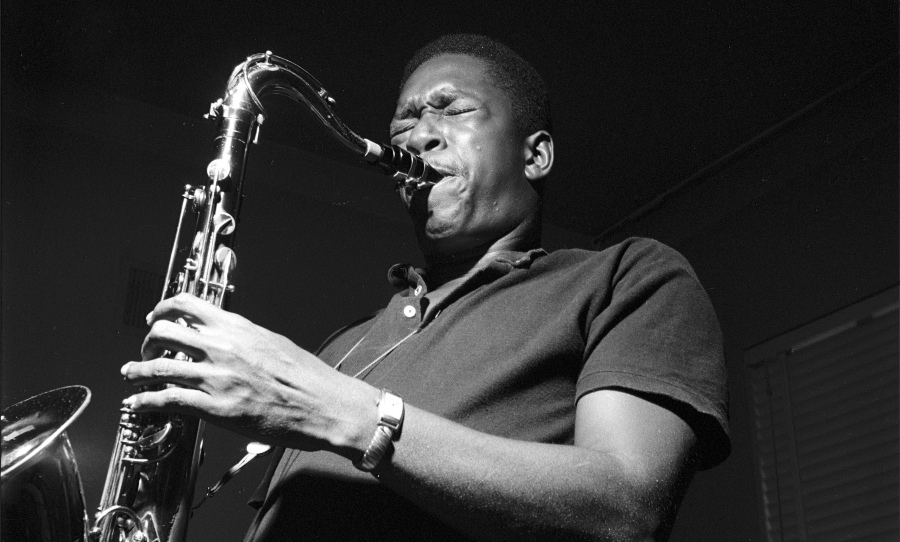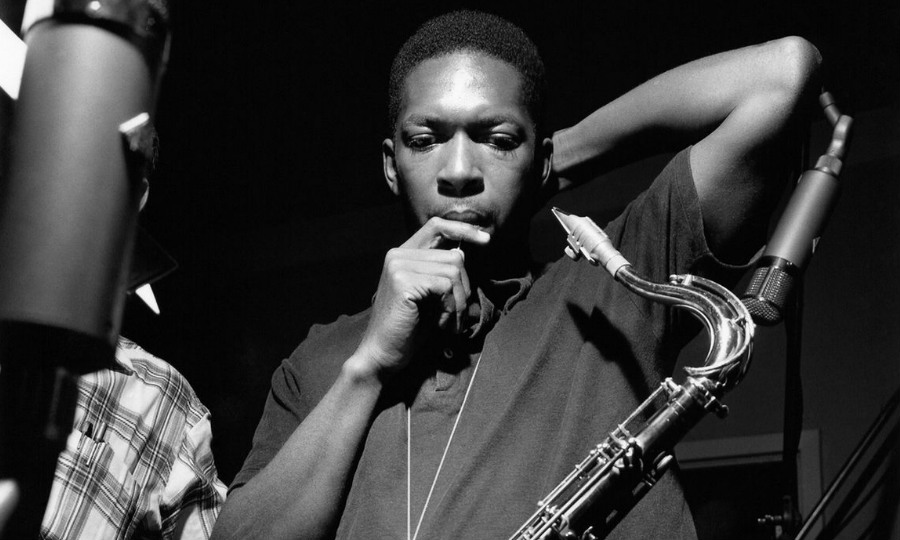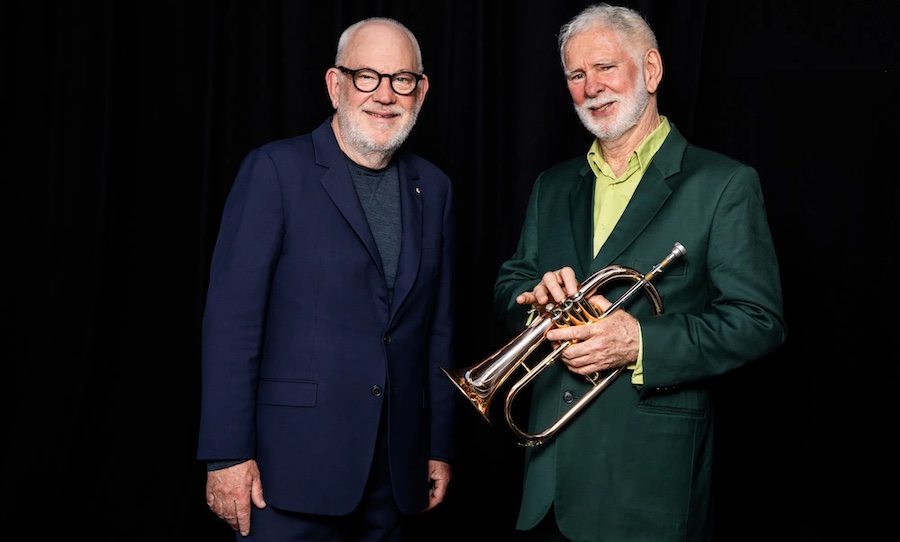From his most transcendent works to his most experimental, this a guide to John Coltrane in 5 essential albums. All aboard the Coltrane!
It’s hard to imagine jazz without John Coltrane. Or music in general for that matter. Aside from Miles Davis, there is likely no other singular figure that has so profoundly imprinted the genre.
It wouldn’t be as beautiful, or as confronting. It wouldn’t be as sublime or translate with complete wordlessness the authenticity of love and emotion.

After finding himself in the ‘First Great Quintet’, along with Miles Davis in 1956, Coltrane revealed the first signs of preternatural talent before he was fired, for the second time, due to his worsening drug addiction.
The following year, Coltrane kicked his heroin habits and was playing with Thelonious Monk at New York’s Five Spot Café. From 1957 to his death in 1967, John Coltrane released 34 albums – averaging three a year – with another 11 issued posthumously. His intense passion for his craft forged a canon of work that is as revered and it is feared.
This is a five-part beginner’s guide to the best Coltrane album, from hard bop to free jazz and beyond.
5. A Love Supreme (1965)
A Love Supreme is widely regarded as the single greatest work to ever bear the name: John Coltrane. And with good reason. It’s a perfect blend between easy listening and the furious heights that make Coltrane a visionary.
In the final two years of his life, Coltrane once again found himself in the throes of addiction. He found solace in a spiritual pursuit, purportedly as a hallucination of God during withdrawals. Thus, A Love Supreme is borne out of technical prowess, raw emotions, and divine faith.
A hallowing, serene expression of conceptual jazz, this is the work that legends are made of.
4. Blue Train (1958)
John Coltrane’s only album with Blue Note Records is aptly titled, and one of those albums you listen to a million times. With a near-legendary sextet rounded out by Lee Morgan, Paul Chambers, Curtis Fuller, Kenny Drew, and Philly Joe Jones, this is Coltrane’s first and most enduring masterwork.
At times Fuller’s trombone and Morgan’s trumpet even threaten to steal the show. If you’re looking for the ultimate definition of hard bop, Blue Train is it. If you’re cautiously approaching free jazz or avant-garde like some irate slumbering beast, then Blue Train is a critical launchpad for new heights and remains a classic to this day. Plus the john coltrane album cover is sublime.
3. Live at the Village Vanguard (1962)
Scarcely any other live albums put you in the heat and frenzy of a New York City jazz club in the early ’60s. Live at the Village Vanguard was Coltrane’s first live album and it moves with a frenzy and rich presence that makes you feel as if you’re sitting right in front of him, watching his lungs bust through a miasmic smoky vapour.
This particular concert divided the jazz world at the time, leaving people questioning whether it was unparalleled genius or pure musical nonsense. Moreover, it features one Eric Dolphy on bass clarinet, an early pioneer of free jazz, but we’ll get to that.
As John Coltrane professed in an issue of Downbeat magazine, “the main thing a musician would like to do is to give a picture to the listener of the many wonderful things he knows of and senses in the universe.”
2. Giant Steps (1960)
In 2001, musician and artist Michal Levy translated the melodic motif of John Coltrane’s infamously complex Giant Steps into an architectural video that visually explains the directions of his solo. In some ways, it gives us a better understanding of his unlikely symmetry and improvisational patterns that jazz writer Ira Gitler dubbed “sheets of sound.”
Coltrane quickly makes his presence known through the rush and frenzy of Giant Steps. His first truly great album since 1958’s Blue Train, it’s bolder, more experimental, and largely orbits around Coltrane’s solos, which are nothing if not sublime.
1. Ascension (1966)
Fair warning, Ascension is absolutely the most difficult Coltrane album to understand, hence why it’s at the bottom of this list. It’s 40 minutes of free jazz experimentation, which means that shit gets extremely weird.
Yet, there is a method to the madness. And even the freakout sections present a collected calculation submerged in the turbulence. Thus it is essential listening when trying to understand what Coltrane was doing with his career. Free jazz was a relatively niche genre before Ascension and it took someone like Coltrane to blow it up.
Here, you will find cats like Pharoah Sanders, Archie Shepp, and Freddie Hubbard busting their guts out through their brass across this nonstop musical trip. The key to enjoying free jazz is locating the form within the chaos. The moments where musicians link up. These sections became an anchor to latch onto before they spasm into another freakout phrase and can ultimately become an incredibly rewarding listening experience.
best coltrane album covers



